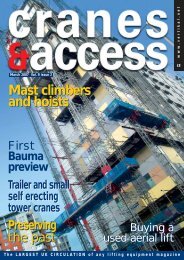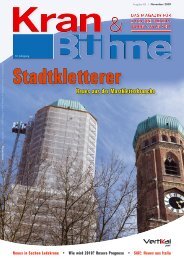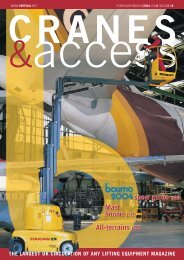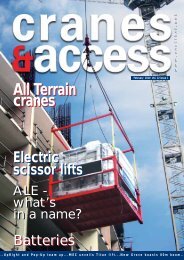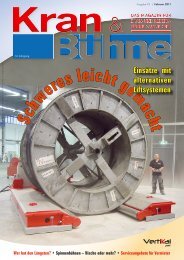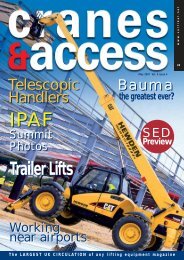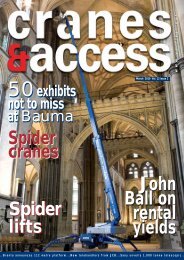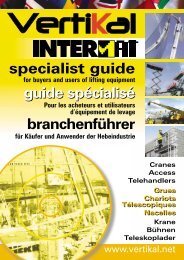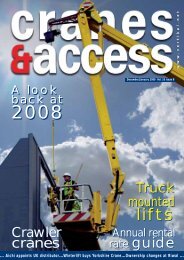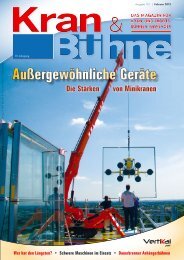Maintenance, Inspection and Thorough Examination of Mobile Cranes
Maintenance, Inspection and Thorough Examination of Mobile Cranes
Maintenance, Inspection and Thorough Examination of Mobile Cranes
You also want an ePaper? Increase the reach of your titles
YUMPU automatically turns print PDFs into web optimized ePapers that Google loves.
� Non destructive testing;<br />
� Dimensional measurement;<br />
� Torque measurement;<br />
� Bearing play measurement;<br />
� Pressure <strong>and</strong> flow measurement (hydraulic <strong>and</strong> pneumatic).<br />
All test <strong>and</strong> measuring equipment should be marked with a unique identification<br />
number <strong>and</strong> entered on an asset register to ensure that the equipment can be<br />
monitored <strong>and</strong> tracked throughout its life. Equipment should be stored in a dry <strong>and</strong><br />
secure location.<br />
13.15 Calibration<br />
All test <strong>and</strong> measuring equipment should be subjected to periodic calibration to<br />
nationally traceable st<strong>and</strong>ards, marked with the calibration expiry date <strong>and</strong> records<br />
kept <strong>of</strong> the calibration. The calibration interval should be set taking into account<br />
manufacturer’s guidance together with the frequency <strong>and</strong> conditions <strong>of</strong> use.<br />
13.16 H<strong>and</strong> Tools<br />
All h<strong>and</strong> tools should be checked <strong>and</strong> maintained by the user at regular intervals to<br />
ensure that they continue to function safely. H<strong>and</strong> tools should also be checked at<br />
regular intervals by the supervisor.<br />
13.17 Power Tools<br />
<strong>Maintenance</strong> personnel should have access to adequate power tools to enable them<br />
to carry out maintenance tasks safely <strong>and</strong> efficiently. These tools should be checked<br />
<strong>and</strong> maintained at regular intervals to ensure that they continue to function safely.<br />
Electric power tools are required to be checked before each use by the user <strong>and</strong><br />
more formally (PAT tested) at regular intervals to ensure that they remain safe. In<br />
general power tools used on construction sites should be PAT tested at a maximum<br />
<strong>of</strong> three monthly intervals, whilst those used in a workshop or permanent<br />
establishment should be tested every six to twelve months. This will include chargers<br />
<strong>and</strong> inverters for cordless tools.<br />
NOTE: Further advice on the maintenance <strong>and</strong> testing <strong>of</strong> electrical power tools is given in<br />
HS(G) 107 - Maintaining portable <strong>and</strong> transportable electrical equipment.<br />
13.18 Welding Facilities<br />
Before undertaking welding on structural components, the crane manufacturer must<br />
be consulted,<br />
Welding on structural components should only be carried out by trained competent<br />
personnel working to welding procedures approved by the mobile crane<br />
manufacturer or following a full engineering assessment by a competent engineer.<br />
Welding should be carried out undercover wherever possible <strong>and</strong> arrangements<br />
should be made to protect welders <strong>and</strong> other personnel from arc flashes <strong>and</strong> welding<br />
fumes.<br />
Welding equipment should be regularly checked, maintained <strong>and</strong> calibrated as<br />
appropriate. Consumables should be stored in a secure dry area.<br />
Weld repairs should be subjected to full visual, <strong>and</strong> where appropriate NDT<br />
inspection.<br />
36



